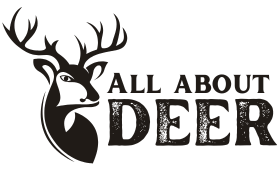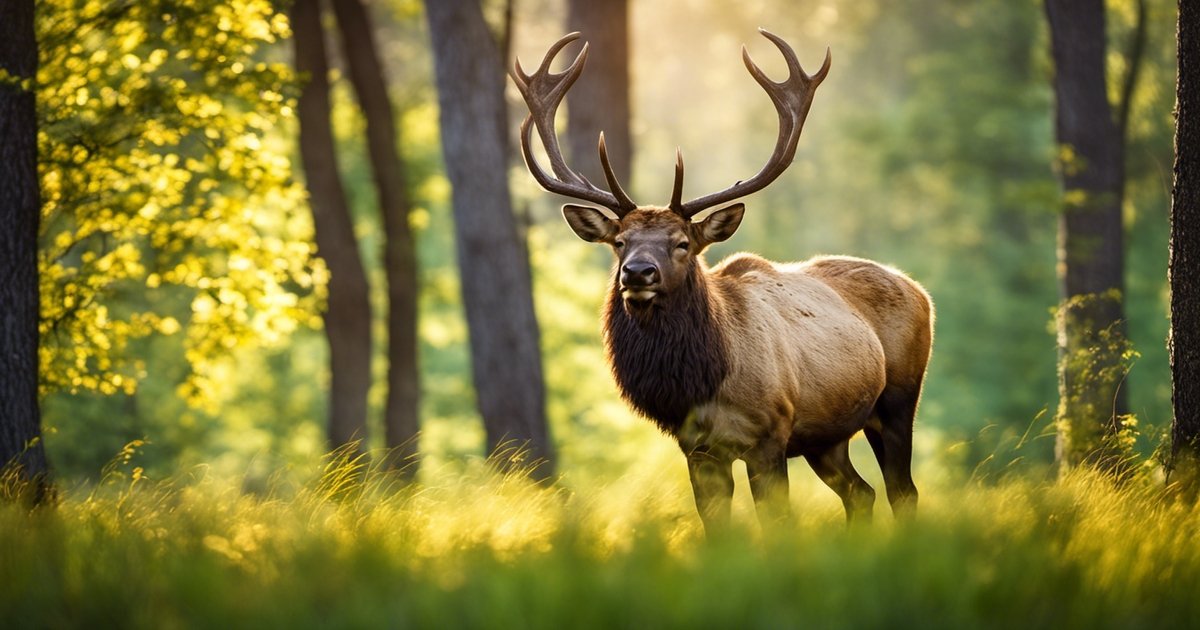Elk, like any other deer species is herbivores, have a diverse diet consisting primarily of plant material. Their diet composition includes a wide variety of vegetation.
Understanding what do elk eat helps inform conservation strategies and land management practices to ensure the availability of suitable food sources for these magnificent animals. Knowledge about elk diets aids in assessing potential impacts on vegetation communities and other wildlife species that rely on similar resources.
Table of Contents
Key Takeaways
- Elk have a diverse diet, adapting to different seasons and habitats.
- They consume grasses, forbs, shrubs, and tree bark.
- Elk diets play a crucial role in their body condition, reproduction, and overall health. The foods they graze on directly impact their well-being and are therefore a key consideration in wildlife management.
- Conservation efforts should focus on preserving suitable food sources for elk populations.
What Do Elk Eat Through out the Seasons?
Elk, known for their antlers, are not picky eaters. They have an adaptable palate that changes with the seasons and their surroundings. Their diet consists of various foods found in their hunting grounds.
What Do Elk Eat in Spring?
In spring, when the snow begins to melt and nature comes alive again, elk eagerly seek out new growth in the aspen range for hunting. Aspen becomes their primary food source. They graze on fresh grasses and young plants that have sprouted after the long winter. This lush greenery provides essential nutrients and energy to replenish their bodies after months of limited food availability.
What Do Elk Eat in Summer?
As the days grow longer and warmer, elk shift their focus to a diverse array of green vegetation, including aspen. They browse on leaves, herbs, aspen, and other succulent plants found in meadows and forests. This abundant supply of plant material allows them to meet their nutritional needs while also providing hydration during the hot summer months.
What Do Elk Eat in Fall?
With the arrival of fall, elk adjust their eating habits once again. As green vegetation becomes scarcer, they turn towards consuming more woody browse such as shrubs and tree twigs. These fibrous materials provide sustenance while also helping to wear down their teeth, which continue to grow throughout their lives. The transition from soft greens to tougher browse prepares them for the challenges ahead.
What Do Elk Eat in Winter?
Winter presents a formidable challenge for elk as food becomes scarce due to snow-covered landscapes and freezing temperatures. During this season, they rely heavily on stored fat reserves accumulated during more plentiful times. Elk eat less overall but still manage to find available food sources such as lichen or bark from trees when necessary.
Male elk face additional pressures during winter as they shed their antlers after the rutting season ends. Without these impressive headgear that once helped establish dominance and attract mates, bull elk must conserve energy by minimizing movements and reducing feeding activity.
Female elk (cows) face different challenges during winter as they carry calves within them during this time. They prioritize their own survival to ensure the health and development of their offspring.
Forage Selection and Competition
Elk’s forage selection is influenced by factors such as availability, nutritional content, and palatability. They are selective feeders, choosing the most nutritious options within their reach. This can sometimes lead to competition with other herbivores like mule deer for limited food resources.
Hunting seasons also impact elk’s eating habits. As hunters pursue game during specific times of the year, elk may alter their movements and feeding patterns to avoid areas where they feel threatened or exposed.
Understanding elk’s eating habits throughout the seasons is crucial for wildlife management and conservation efforts. By studying their dietary preferences and adapting hunting regulations accordingly, we can ensure a sustainable balance between human activities and the natural ecosystem.
Top 10 Favorite Foods of Elk
Elk have a diverse diet, and their food preferences change throughout the year. Here are the top 10 favorite foods of elk:
1. Grasses
Grasses are a staple part of an elk’s diet throughout the year. They provide essential nutrients and are easily accessible in open meadows and grassy areas.
2. Forbs
Forbs are broad-leaved flowering plants that elk consume to obtain necessary nutrients. These plants offer a variety of flavors and textures, making them an appealing choice for elk.
3. Shrubs
During fall when other food sources decline, elk turn to shrubs as a source of nourishment. Shrubs provide sustenance during this time when other options may be scarce.
4. Tree Bark
In winter months when snow covers the ground, elk rely on tree bark as an important food source. The inner layer of bark contains vital nutrients that help sustain them during harsh conditions.
5. Sedges
Elk prefer sedges during springtime when these grass-like plants grow abundantly near water sources. Sedges offer a fresh and nutritious option for elk during this season.
6. Herbaceous Plants
Herbaceous plants, such as wildflowers and leafy greens, form an important part of an elk’s diet due to their high protein content. These plants contribute to the overall health and well-being of elk.
7. Willow Shoots
Willow shoots are nutritious browse favored by elk. They provide essential minerals and nutrients required for optimal growth and development.
8. Aspen Leaves
Aspen leaves serve as a high-energy food source for elk during the summer months. These leaves contain valuable carbohydrates that fuel their activities during this active season.
9. Clover
Clover is another preferred food item for elk as it provides essential minerals required by these majestic creatures. It contributes to their overall nutrition and helps maintain their health.
10. Horsetails
Although consumed occasionally, horsetails offer elk additional nutrients. These plants are rich in silica, which aids in digestion and provides supplementary nourishment.
Elk have a diverse palate and adapt their diet according to the availability of different foods throughout the year. By consuming a variety of plant species, they ensure they receive the necessary nutrients for survival and optimal health.
Understanding Elk Habitat and Eating Habits
Elk, also known as wapiti, have specific preferences. To effectively manage elk populations, it is crucial to understand these factors. Let’s take a closer look at the key aspects of elk habitat and their selective feeding behavior.
Elk Prefer Open Grasslands, Meadows, and Forest Edges as Their Habitats
Elk are primarily found in habitats that offer a mix of open grasslands, meadows, and forest edges. These areas provide them with a diverse range of food options and cover for protection against predators. Elk are adaptable animals that can thrive in various environments, including mountain shrub habitats, rangelands, and even agricultural fields.
They Are Selective Feeders, Choosing Specific Plants Based on Nutritional Content
Elk are selective feeders. They carefully choose plants based on their nutritional content. Elk have evolved to be efficient herbivores by selecting high-quality forage that meets their dietary requirements. This selective feeding behavior allows them to obtain the necessary nutrients while minimizing energy expenditure.
The Availability of Water Sources Near Feeding Areas Is Crucial for Elk Survival
Water is essential for the survival of elk. They require access to reliable water sources near their feeding areas. During hot summer months or dry spells, water becomes even more critical as elk need to stay hydrated while consuming vegetation with high moisture content. Therefore, the proximity of water sources plays a crucial role in determining suitable elk habitats.
Understanding Their Habitat Preferences Helps in Managing Elk Populations Effectively
By understanding the habitat preferences of elk, wildlife managers can develop effective strategies for managing elk populations sustainably. This knowledge helps identify productive habitats where elk thrive and make informed decisions regarding land use planning and conservation efforts.
What Do Elk Eat in Winter
Elk have a varied diet, but their food choices change significantly during the winter months. In winter, when food sources are scarce, elk primarily rely on woody browse such as shrubs, twigs, and bark.
They have the ability to strip the bark off trees, allowing them to access the nutritious inner layers. Elk also feed on evergreen needles, especially those from pine and fir trees. These needles provide essential nutrients and help the elk survive the harsh winter conditions.
Elk may dig through snow to reach grasses and sedges that are still available. Despite the limited food options, elk have adapted to efficiently utilize the resources available to them during the winter months.
The elk’s diet in winter is crucial for their survival and reproduction. While they primarily consume woody browse and evergreen needles, they also rely on stored fat reserves to sustain them through the colder months.
This is especially important for pregnant females, as they need extra energy to support their developing calves. The elk’s ability to forage on bark and twigs, as well as dig through snow, showcases their resourcefulness in finding food during challenging conditions.
By diversifying their diet and utilizing different food sources, elk are able to maintain their health and vitality throughout the winter season.
What Do Elk Eat FAQs
What are some common misconceptions about elk diets?
Elk are often mistakenly believed to be strict herbivores, but they occasionally consume small mammals or birds when other food sources are scarce. However, such instances are rare and do not significantly impact their overall diet.
How much do elk typically eat in a day?
The daily consumption of an adult elk varies depending on factors such as age, sex, and environmental conditions. On average, they may consume between 20-30 pounds of vegetation per day.
Do elk eat grass?
Yes, grass is an essential part of an elk’s diet throughout the year. During summer months when it is abundant, grass constitutes a significant portion of their daily intake.
Are there any plants that elk avoid?
Elk tend to avoid consuming highly toxic plants such as lupine or death camas due to their potentially harmful effects on their health.
Can human food harm wild elk?
Feeding wild animals is strongly discouraged as it disrupts their natural behavior and can lead to dependency on human sources. Human food can also be harmful to elk, causing digestive issues and potential health problems.
How do elk find food in winter when it is scarce?
Elk have the ability to dig through snow using their hooves to uncover hidden vegetation. They also rely on their well-adapted sense of smell to locate available food sources beneath the snow-covered landscape.


